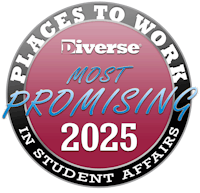THE MOST PROMISING PLACES TO WORK IN STUDENT AFFAIRS: INSTITUTIONAL PROFILES

Elon University
A private university in North Carolina founded in 1889, Elon University’s student population is approximately 7,000. This includes undergraduates as well as master’s and doctoral students spread across six colleges.
“Our deep commitment to student success, engaged learning, inclusive excellence, and a thriving, collaborative workplace culture is one of the best reasons to work with the division of student life at Elon University,” says Dr. Jon Dooley, vice president for student life. “The leadership at Elon respects and invests in the contributions of student affairs professionals, ensuring that our work matters as we support the university’s mission of fostering engagement and student success.
“Through open communication, professional development and intentional collaboration, we have fostered a workplace where staff can navigate challenges together,” he adds.
Elon’s approach to student success is grounded in data-informed decision-making and meaningful student engagement. There is consistent interaction with students, engaging them in the work of student life, carefully listening to their experiences and needs, while systematically collecting data that helps shape the policies, programs and initiatives.
“We use data not just to evaluate outcomes but to identify opportunities for growth and innovation,” Dooley says. “Our goal is to ensure that every student has equitable access to the resources, opportunities and support they need to succeed.”
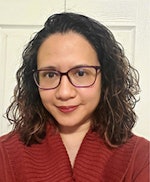
Gonzaga University
Gonzaga University, a private Jesuit institution in Spokane, Washington, is again named to the Most Promising Places to Work in Student Affairs. Dr. Joan Iva C. Fawcett, dean of social justice leadership and community empowerment, says Jesuit tradition and its humanistic mission are central to the university’s work. Individuals in the division of student affairs aspire to live out those institutional values.
“We emphasize care for the whole person, or cura personalis, not only for students but also for staff,” says Fawcett. “We foster belonging through new staff onboarding, affinity groups and even a few funded staff ‘clubs.’”
Professional development programs are monthly for the division and an all-day colloquium is held each January. Staff are readily able to voice concerns, ask questions, share ideas and offer praise to each other.
There is a staff member dedicated to supporting all student affairs departments in mapping learning outcomes, goals and other impact metrics. Data is used to make decisions about how to create, maintain, modify, or eliminate programs and services in order to best support all students. Students are included in data analysis, decision making and strategic planning.
“We dialogue and discern about work realities and routinely engage student affairs staff at all levels to identify solutions to challenges,” says Fawcett. “Whether it is a global pandemic, the enrollment cliff, leadership transitions, or identity-based issues, we center social justice in our deliberations.”

Indiana University Bloomington
“Indiana University Bloomington has a rich history of engaging in meaningful student affairs work,” says Dr. Lamar R. Hylton, vice provost for student life. “We lean into our value of people first and strive to ensure that our team is equipped with the tools necessary to craft a premier and thriving student experience. People are at the heart of what we do and pouring into the wellbeing of our staff allows them to show up fully and authentically support our students and community.
“It is important to create conditions that allow us to do our best work,” he continues. “We maintain an environment that invites staff to show up as their whole selves.”
A large public research university with over 48,000 students, quantitative and qualitative data are utilized to design and implement experiences for students. Hylton notes that frequent student feedback is essential.
“As we hear feedback from students through individual conversations, surveys and focus groups they participate in, and by attending their events and programs, we are able to make timely and relevant decisions about leveraging our programs, services, facilities and fiscal resources with an eye toward enabling their success,” says Hylton.
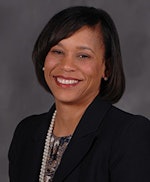
Kent State University
This is the fifth consecutive recognition for Kent State University, a public research university in Ohio that serves almost 35,000 students across its main campus and seven regional campuses. Dr. Eboni Pringle, senior vice president, division of student life, says being a nationally recognized workplace means fostering a culture where everyone feels heard and valued.
“Collective efforts drive our success,” says Pringle. “At Kent State University, student life thrives in an environment that values diversity, inclusivity and collaboration. It takes the commitment of faculty, staff and students working together to create a community where excellence and belonging flourish—making Kent State a truly great place to learn, grow and work.”
The division of student life fosters a positive work environment by prioritizing staff wellbeing and professional development. Several strategies are utilized. There are flexible work arrangements and wellness programs to support work-life balance and mental health. Staff are provided division-specific professional development experiences and are encouraged to engage in ongoing learning opportunities, such as conferences, webinars and leadership training. There are division-wide social events and team-building activities.
“We cultivate a transparent and inclusive culture through regular team meetings, staff feedback and recognition programs,” says Pringle. “Major decisions are made collectively with members of the division invited to engage in dialogue, focus groups, interviews and surveys.”
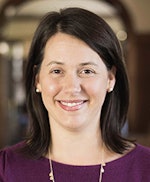
Lehigh University
“We’re part of a warm, collegial environment that fosters a strong sense of community,” says Dr. Katherine Lavinder, interim vice president for student affairs at Lehigh University, a private research university in Pennsylvania. “Our work is guided by a clear purpose and values, with a curriculum that prioritizes holistic student development. This gives staff a chance to find real meaning in what they do, all while being united by a shared mission to help students succeed.”
Collaboration is key as departments partner across disciplines, creating a network of professionals who are focused on supporting students. Professional development is also a priority. Workshops, conferences and leadership training programs provide opportunities for growth and innovation.
Adapting to change has been essential these past five years, and technology has been embraced along with creative problem-solving to address hybrid work, shifting student needs and the demand for new programs.
“Our division is made up of people with different needs, goals and strengths, and we’re committed to creating an environment where everyone can thrive and make a meaningful contribution,” Lavinder says. “We work hard to build a sense of connection and morale by focusing on team building and camaraderie. Whether it’s through collaborative projects, social events, or recognizing individual and team accomplishments, we foster community that’s all about belonging and shared purpose.”
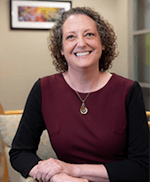
Miami University-Oxford
Miami University in Oxford, Ohio, is a public research university that serves over 20,000 undergraduate and graduate students in its seven schools and colleges. Dr. Jayne E. Brownell, senior vice president, student life, describes it as student centered and student ready.
“Everyone is invested in the growth, learning and success of our students, allowing us to work as partners across the division, but also across the university, to improve the student experience,” says Brownell. “We attract staff and faculty who want to be actively engaged in the lives of our students, which creates a special culture to be a part of. As a division, we have clarity about our purpose and mission, but within an environment that provides freedom to innovate and explore new ideas for the benefit of students.
“We value every member of our team as people as well as professionals and work to create an environment where each member can bring their whole, authentic selves to our work,” she adds.
Multiple methods are utilized to measure whether the goals and mission are being achieved. This includes seeking out feedback from students and campus partners, and using that data to improve programs, services and policies. These methods include focus groups and conversations with students, surveys and in-person observations and interactions with students and student organizations.
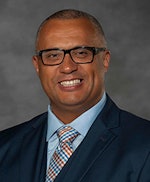
New Mexico Institute of Mining and Technology
A public university, the New Mexico Institute of Mining and Technology (NMT) offers over 30 bachelor of science degrees in technology, the sciences, engineering, management and technical communication as well as graduate degrees. The division of student affairs serves the school’s more than 1,500 students.
Dr. David L. Greene, vice president for student affairs and chief diversity officer, notes that student affairs is an integral part of the educational experience. The division has the goal to create and deliver innovative programs and outstanding services to enhance the academic experience. Students are encouraged to take full advantage of programs, events and resources.
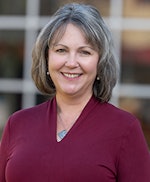
Pennsylvania College of Technology
The Pennsylvania College of Technology is a public institution that offers certificate, associate, bachelor’s and master’s degree programs in more than 100 fields of study. The student populations numbers approximately 5,300.
“Effective student support and engagement starts with supporting and engaging your professional staff,” says Dr. Jennifer McLean, dean of students, academic affairs. “Penn College’s employee culture is exemplary in the sense of teamwork and collaboration, outstanding benefits, ongoing professional development opportunities and a shared vision for preparing our students for success both in and outside the classroom.”
McLean acknowledges that the challenges facing higher education and student affairs can be daunting. Understanding that most issues are complex, the department looks for opportunities to make small differences for the college’s students and provide whatever supports it can.
Operations in student affairs are guided by a strategic plan for the division that is developed in alignment with the college’s strategic plan.
“Data plays a crucial role in the development of these plans and in their ongoing assessment,” says McLean. “Student affairs relies upon insights gathered from the Healthy Minds Study, ACHA-NCHA, Benchworks ACUHO-I and campus climate surveys in conjunction with internal assessment strategies to identify and respond to needs, set goals and genuinely inform our work.”
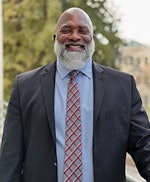
Sonoma State University
Sonoma State University, part of the California State University system, offers bachelor’s and master’s degree programs as well as teaching credentials. It has Hispanic Serving Institution status.
“Sonoma State University’s division of student affairs is home to dedicated practitioners who deeply value our students’ experience, prioritizing holistic student development,” says Dr. Gerald L. Jones, vice president for student affairs and dean of students. “Our staff is empowered and knowledgeable about all aspects of student life outside the classroom.”
Jones explains that the campus’ relatively small size—approximately 7,800, the majority of whom are undergraduates—allows students and staff to build relationships, which amplifies the staff’s drive to improve student life. The staff values shared governance with student leaders, making sure they are heard and an integral partner in helping shape innovative programs reflective of an ever-evolving campus and community.
“Our division of student affairs is a collaborative and inclusive environment where innovation is encouraged and achievements are celebrated,” says Jones. “Open communication, among staff and across teams, as well as shared governance, empower staff to bring new ideas forward and creatively problem solve in a safe and encouraging environment. We actively promote a diverse and equitable work environment, reflecting those values in policies and programming.”

State University of New York at Oswego
“Student affairs as a division maintains a positive environment because we have genuine people working together that truly care about one another and want to see everyone be successful,” says Dr. Gabriel Marshall, associate vice president for student affairs at State University of New York (SUNY) at Oswego. “We are intentional about creating opportunities for dialogue and celebrate successes departmentally and divisionally.
“We have also shown a willingness to have difficult conversations, when necessary, and process the thoughts and feelings that accompany those situations.”
A public institution part of the SUNY system, SUNY Oswego offers more than 120 undergraduate, graduate and professional based programs across four colleges. To ensure student needs are met, student affairs conducts student surveys through various platforms, offers student focus groups and works collaboratively with several departments to analyze the data to determine department and divisional learning domains, goals and learning outcomes.
“What makes SUNY Oswego an outstanding place to work in student affairs is the people and the relationships that have been formed and nurtured over time,” says Marshall. “Having leadership that is mission focused, clear about strategic vision and willingness to be transparent and inclusive provides opportunities for everyone to have a voice, contribute and be recognized for their efforts.”
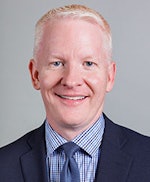
Stony Brook University
A flagship institution in the State University of New York system, Stony Brook University is a public research university that serves over 25,000 students. Outstanding students deserve outstanding supports, notes Dr. Richard Gatteau, vice president for student affairs.
“We continually strive to create a culture of excellence, encouraging professional development opportunities, implementing workplace diversity and inclusion practices, as well as creating a community of team members committed to enhancing student life on campus,” says Gatteau. “We are also committed to promoting a healthy work-life balance for our team, which includes family-friendly policies, flexible work arrangements and comprehensive benefits packages.”
After the pandemic, a more comprehensive onboarding process was implemented for new team members. It not only provides essential information about the university and student affairs, but also educates new hires about the functions and responsibilities of other areas within student affairs.
“Our robust staff member orientation covers the history and culture of SBU and the division, outlines team member expectations, highlights professional development opportunities and staff support,” Gatteau says. “Another important goal is to foster relationship building with colleagues across different departments.”
Gatteau periodically hosts lunches where staff can engage in casual conversation with leadership, ask questions and share ideas. There are annual in-person events for the entire division and an annual convocation to celebrate team members’ accomplishments.
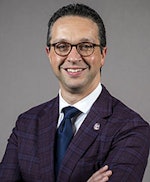
University at Albany, State University of New York
Part of the State University of New York system, University at Albany is a public research university serving more than 16,000 students. From fostering a flexible and family-friendly work environment to championing diversity and inclusion, UAlbany has cultivated a culture where employees thrive.
“The university’s institutional telecommuting policy is a game changer, giving staff the option to balance their professional duties with personal responsibilities,” says Dr. Michael N. Christakis, vice president for student affairs and enrollment.
The development and implementation of a comprehensive diversity, equity and inclusion plan highlights the division’s dedication to creating an environment where every voice is valued. The division expanded its leadership group to include mid-level managers. Data is crucial, utilizing tools such as the six-week survey, unit-specific surveys and institutional data to take the pulse of the student body.
“The past five years have tested us all, but UAlbany’s division of student affairs and enrollment has turned challenges into opportunities to strengthen our work culture,” says Christakis. “Annual events like the end-of-the-semester winter social, winter connect, summer CONFAB and excellence awards have become staples of our division. These gatherings are moments to collaborate, network and recharge. Supervisors actively encourage staff participation, ensuring everyone feels included and valued.”
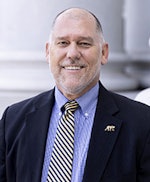
University of California-Berkeley
“UC Berkeley is an exceptional place to work in student affairs because of its commitment to fostering an equitable, inclusive and aspirational environment for both students and staff,” says Dr. Stephen C. Sutton, vice chancellor for student affairs. “Guided by our student affairs strategic plan, our division here at Berkeley focuses on creating unified priorities such as transforming the student experience, advancing equity and inclusion, and promoting holistic well-being.”
A public land-grant research university, University of California, Berkeley, is the founding campus in the University of California system and a flagship institution. It serves over 45,000 students, known for both their academic and athletic accomplishments.
Programs such as “first year flourish” provide a year-long orientation for staff, creating a supportive foundation for their work. Guided by the strategic plan, student affairs has introduced initiatives that emphasize staff belonging, value and authenticity. Student affairs utilizes a data-driven approach and actively engages with students to ensure their needs are met.
“In addition, we’ve established a DEIBJ (diversity, equity, inclusion, belonging and justice) advisory board to provide a way to get direct feedback from staff about their lived experiences,” says Sutton. “This group meets monthly and provides me with useful insights and recommendations for how to address staff concerns.”
The culture of equity, inclusion and belonging working group addresses diverse staff needs, and the health justice and holistic well-being initiatives focus on individual fulfillment and community engagement. There are resources such as wellness workshops, mental health support and programs that encourage work-life balance.

University of California, Riverside
“Despite the challenges all universities encounter, we keep the work environment positive by hiring and retaining leaders and staff who are passionate about what we do,” says Dr. Brian Haynes, vice chancellor for student affairs, University of California, Riverside (UCR). “We are mindful of recognition, engagement and wellness efforts, including understanding what’s important to our staff in helping them balance both work and life.”
A public research institution that is part of the University of California system, UCR serves a student body of more than 26,000, which includes both undergraduate and graduate students. Aspects of student affairs include residential life, career readiness, in-person events and Division I athletics. Haynes notes that UCR student affairs is a nationally recognized innovator, including founding a professionally staffed LGBT resource office more than 30 years ago to currently having 10 ethnic and gender program offices and student centers.
“Our STAR Awards program supports recognition efforts where staff can recognize, acknowledge and reward employees for exceptional performance and/or significant contributions related to and supportive of individual, departmental, divisional and and/or organizational goals and objectives,” says Haynes. “Our ‘Lunch with the VC’ initiative helps promote engagement through listening sessions, where staff shares feedback about what’s working and what could be better.”

University of Delaware
“Recognizing and appreciating our teams for their hard work is essential to maintaining a positive work environment,” says Dr. José-Luis Riera, vice president for student life at the University of Delaware, which serves more than 24,000 undergraduate and graduate students. “One of the ways we do this is through the Hen High Five program, where staff members can officially recognize each other with a digital ‘high five.’ These acknowledgements are recorded by HR, and those recognized are entered into raffles for prizes, adding an extra layer of appreciation.”
Additionally, a strategic plan has been implemented for the division. This enables the team to continuously assess and adapt their work. The strategic plan reflects the organizational mission, vision and values and helps everyone focus beyond the daily challenges. By regularly evaluating their progress, the staff is able to make changes as needed, ensuring they remain responsive to the students’ evolving needs.
“We use a combination of data and direct student engagement to ensure we are meeting student needs,” Riera says. “One key tool is the Blue Hen Check-In Survey, which we ask all new students to complete each semester. This brief survey gathers valuable insights on areas such as student involvement, wellbeing and finances. We use this data to follow up with students who have identified specific needs, offering targeted support where necessary.”
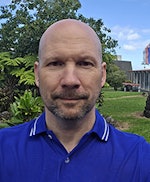
University of Hawaii at Hilo
Part of the University of Hawaii system, University of Hawaii at Hilo utilizes data and student engagement to assess and adapt services to meet the evolving needs of students. Student affairs regularly analyzes institutional data, such as retention and graduation rates, disaggregated by student demographics, to identify trends and areas needing improvement.
Dr. Christopher Holland, vice chancellor for student affairs, says the past five years have tested student affairs staff in ways they never imagined, but they have also showed each other, the students and the university the importance of resilience, collaboration and compassion.
“At HU Hilo, we strive to foster a supportive work environment by emphasizing open communication, professional development and a shared sense of purpose,” says Holland. “We’ve implemented wellness initiatives, such as mindfulness workshops and opportunities to connect outside of work, to support our team’s mental and physical health.
“Additionally, we consistently reflect on our values and mission, reminding ourselves why we do this work: to create a positive and lasting impact on our students and the community,” he adds. “This sense of shared purpose keeps us grounded, even in challenging times.”
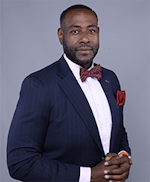
University of Maryland, College Park
University of Maryland, College Park, is the flagship institution of the University System of Maryland. Dr. Kevin Laurence Pitt, assistant dean in the dean of students office, division of student affairs, says this recognition reflects the dedication of the team to supporting students and fostering an environment where staff can thrive.
“The University of Maryland is distinguished by its culture of collaboration, innovation and commitment to meeting the evolving needs of a diverse student body,” says Pitt. “Our work is grounded in a shared purpose: creating an inclusive, supportive environment where students can succeed and staff are empowered to contribute meaningfully to that mission. Professional development, interdisciplinary partnerships and the freedom to innovate are key to making UMD an exceptional place to work.”
The dean of students’ office has developed a comprehensive dashboard using Tableau software to track and visualize key metrics related to student mental health, well-being and engagement. This tool allows the division to integrate data from multiple sources, such as counseling trends, academic performance and incident reports, enabling the staff to proactively identify patterns and allocate resources where they are most needed.
“We pair these data-driven strategies with direct engagement through focus groups, surveys and advisory boards to ensure our initiatives are grounded in the lived experiences of our students,” Pitt says. “This dual approach enables us to anticipate emerging needs and implement solutions that enhance student success and well-being.”
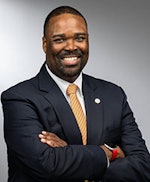
University of Texas at Arlington
“At the University of Texas at Arlington, the division of student affairs thrives on a collaborative, student-centered approach,” says Dr. Lowell K. Davis, vice president for student affairs. “We value innovation and the pursuit of excellence, which allows our staff to feel empowered in their roles.”
A public research university, University of Texas at Arlington has one of the most diverse student populations in the nation. To best serve the university’s more than 40,000 students requires collaboration and creativity as well as empowering staff to develop impactful programs and initiatives. The division invests in professional development and cutting-edge resources.
“We innovate, lead and inspire, fostering a dynamic environment where everyone has the opportunity to make a meaningful impact on student success and the broader campus community,” says Davis.
The division of student affairs places considerable emphasis on the strategic use of data and feedback. Regular use of quantitative assessment methods and analytics allow the staff to identify trends and areas of need, while student engagement metrics ensure they are effectively reaching and supporting the diverse student body.
“Additionally, we actively seek input through focus groups and individual conversations to amplify student voices,” says Davis. “This blend of data-driven strategy and meaningful interaction helps us adapt to evolving needs and ensures that every student feels seen, heard and supported.”
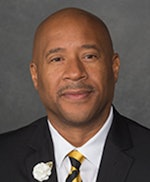
Virginia Commonwealth University
“Receiving this national [recognition] is a testament to [Virginia Commonwealth University] and the division of student affairs for fostering an environment where both our students and staff can thrive,” says Dr. Aaron Hart, vice president for student affairs. “It’s a reflection of the culture we’ve intentionally cultivated—one that prioritizes innovation, equity and the well-being of every individual.
“This recognition isn’t just about accolades; it’s about affirming that we’re creating meaningful change and supporting our team in ways that allow them to deliver their best work for our students,” he adds.
A public research university, VCU has roots going back more than a century. Today, more than 28,000 students—undergraduate through doctoral level—experience a diverse campus and access research opportunities. Members of the student affairs team note that enabling these students to have national and even global impact is a huge motivator.
There have been undeniable changes to student affairs in the aftermath of the pandemic, but staff has been malleable to these evolving changes. The ability to give feedback and work collaboratively fuels the positive environment.
Data plays a role in decision making, with assessments at the program, departmental and divisional levels. These assessments provide detailed understanding of how individual programs and departments meet student needs and deliver impactful services.

West Virginia School of Osteopathic Medicine
West Virginia School of Osteopathic Medicine, a public medical school in Lewisburg, WV, is a four-year program with the first two years on campus and the second two years doing clinical rotations in the area.
“Our student affairs team excels in collaboration, forming strong connections not only among ourselves, but also with others in the school community,” says Dr. Dawn D. Roberts, associate dean for multicultural and student affairs. “Each member brings a unique set of strengths to the table, fostering an environment ripe for the generation of innovative and creative ideas.”
Autonomy is encouraged for the staff. This sense of freedom inspires creativity and enhances collective impact, notes Roberts. Over the past two years, the department has undergone transformation, placing a strong emphasis on fostering inclusion and creating a genuine sense of belonging for students, faculty and staff.
The pandemic-driven shift to remote learning brought a decline in student engagement. In response, student affairs launched its “banish burnout” program, designed to revitalize student interactions. This initiative gives students opportunities to collaborate with each other and engage with the office more frequently.
“Through these strengthened connections, students now feel at ease sharing their thoughts, ideas and needs with us,” says Roberts. “We prioritize timely follow-ups and actively respond with tailored programming and workshops to address their concerns. Our goal is to ensure that every student feels heard, valued and equipped for the challenges ahead.”
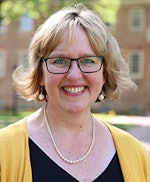
William & Mary
A public research university in Virginia, William & Mary has repeatedly been recognized as one of the most promising places to work in student affairs. Dr. Virginia M. Ambler, senior vice president for student affairs and public safety, explains that institutional values include an express commitment to human flourishing.
“In that spirit, colleagues in W&M’s student affairs division share a deep commitment to creating vibrant, diverse and supportive workplaces and to championing work-life harmony, professional development and inclusive excellence across the division,” says Ambler.
Throughout the college, there is discussion about what flourishing looks like in an ever-changing and at times divisive world. While they cannot know what challenges may come their way, they remain committed to aligning their actions with their core values. This includes prioritizing relationships and building honest connections, which contributes to resilience, particularly in this time of polarization.
“Each student affairs department at W&M engages in regular assessments that meaningfully informs our work,” says Ambler. “Gathering data on an ongoing basis allows us to know when and how we are achieving desired outcomes, and to adjust our efforts accordingly. Robust assessment plans also help us to describe our efforts with clarity and to demonstrate their impact.”
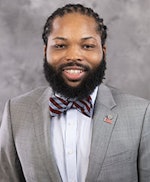
Winston-Salem State University
An HBCU institution in North Carolina, Winston-Salem State University (WSSU) is again included among the most promising places to work in student affairs. Dr. Mel Johnson-Norwood, associate provost and vice chancellor for student affairs, attributes this to the commitment to inclusive excellence, holistic support for staff development, collaboration across divisions, focus on belonging and work-life balance, data-driven and adaptable leadership, and legacy of service and innovation.
“Our strategic plan, ‘Unleash the Genius,’ codifies our commitment to diversity, equity and inclusion and outlines actionable goals for creating spaces where every staff member and student feels valued and empowered,” Johnson-Norwood says. “We prioritize the professional and personal growth of our student affairs staff. Programs like mentoring initiatives, stress reduction workshops and leadership development opportunities ensure that staff members thrive professionally and personally. WSSU also supports staff in achieving their career aspirations through educational leave and continuing education programs.”
Collaboration across departmental silos is encouraged. This fortifies the ability to deliver comprehensive services that support academic success, mental health, financial stability and cultural engagement.
“WSSU uses data to inform practices and adapt to challenges effectively,” says Johnson-Norwood. “As a historically Black university with a deep connection to the community, WSSU embraces its legacy of service while innovating for the future. Our initiatives in student affairs reflect this duality, blending tradition with forward thinking solutions that enhance the student and staff experience.”
